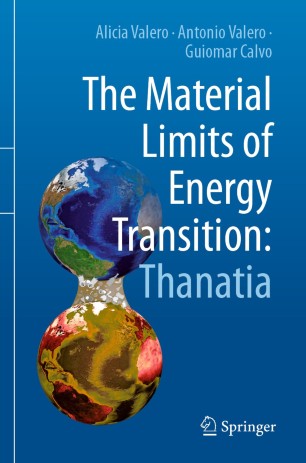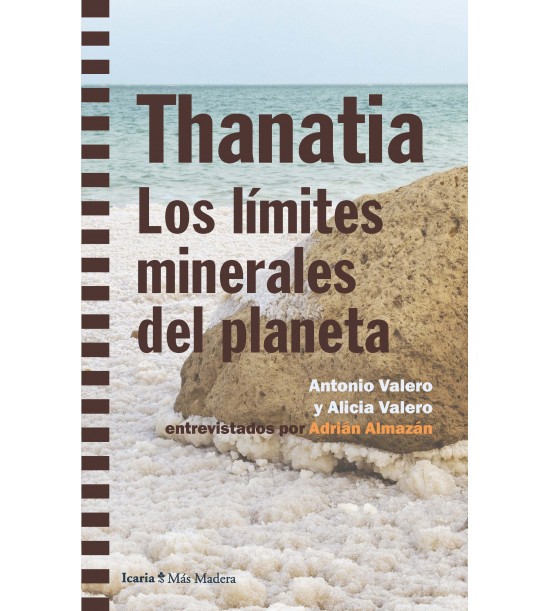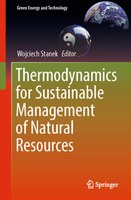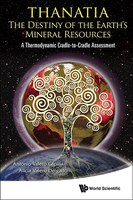Thanatia
Concept
Thanatia, from the greek Thanatos, death, is proposed as the baseline for assessing the concentration exergy of mineral resources. Thanatia represents a hypothetical earth, where all concentrated materials would have been extracted and dispersed throughout the crust and all fossil fuels would have been burned.
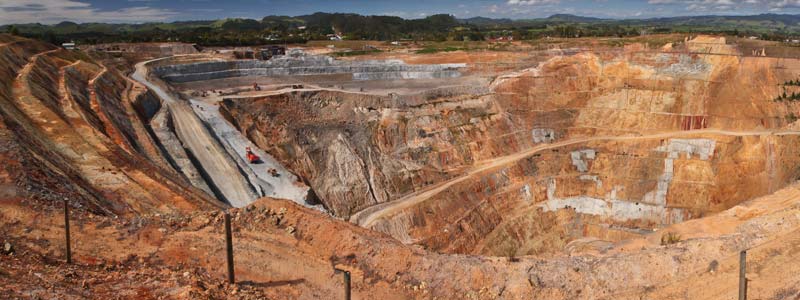
One of the most commonly used reference environments (RE) is that proposed by Szargut (1989) with its subsequent updates. Such RE seek to quantify the relative chemical reactivity of a given system and constitute a basis for calculating chemical exergies. Yet reactivity is only one aspect of distinction, the other is scarcity. Take for example, the nickel ore pentlandite (Fe,Ni)9S8. For nickel, Szargut's reference substance is the ion Ni+2. Hence, the chemical exergy of pentlandite indicates its reactivity with respect to the nickel ion. But this information leaves aside pentlandite’s ore grade with respect to the crustal concentration, which is key to decide whether the ore is exploitable or not. Hence, we need to go a step further in the exergy analysis of minerals depletion. We need to make an inventory of minerals which naturally exist in the Earth's outer layers and propose a realistic “baseline” as a reference, where the thermodynamic message and practical scarcity would converge. If the concentration factor is very important for assessing abiotic resources, both the composition and the concentration of barerock minerals in the reference environment is required. This hypothetical Earth should represent a degraded planet where all resources have been extracted and dispersed, and all fossil fuels have been burned. Valero et al. 2011a, Valero and Valero 2011b coined this Earth Thanatia (from the Greek Thanatos - death).
The Crepuscular Earth model
Thanatia is composed of a degraded atmosphere, hydrosphere and continental crust, which are depicted through the so-called Crepuscular Crust model. The crepuscular atmosphere was created using a simple model of the carbon cycle, assuming that all fossil fuels stocks are burned. Accordingly, the crepuscular atmosphere has a carbon dioxide content of 683 ppm, a mean surface temperature of 17 °C (a peak carbon dioxide induced warming of 3.7 °C above pre-industrial temperatures), a pressure of 1.021 bar and a composition, on a volume basis of 78.8% N2, 20.92% O2, 0.93% Ar and 0.0015% of trace gases. In addition, considering that oceans account for 97.5% of the whole hydrosphere, the crepuscular hydrosphere was assumed to have the current chemical composition of seawater at an average surface temperature of 17˚C. The crust was modelled taking into account only the upper part of it through a least square procedure ensuring coherence between the known elemental chemical composition of the crust (Rudnick and Gao, 2004) and the information provided by the Russian geochemist Grigor'ev (2007) about the crustal mineralogical composition. The resulting crepuscular crust includes a list of the 294 most abundant minerals currently found on Earth with their average composition and crepuscular (or crustal) concentration. In fact, it can be assumed as a first model for the average mineralogical composition of the earth's crust (see Thanatia’s composition).
From this proposed reference we may say that any substance in the Earth different from Thanatia's composition and concentration is an exergy resource that can be useful from a thermodynamic point of view. This way, a mineral deposit of the Ni-ore pentlandite for instance, is an exergy resource because its grade is greater than that in the degraded earth (Domínguez, Valero and Valero 2013).
Note that Thanatia constitutes the starting point for assessing the loss of mineral endowment on Earth due to mineral dispersion, but it does not represents the end of life on our planet. It only implies that abiotic resources are no longer available in a concentrated form. Besides, Thanatia does not substitute for conventional reference environments. The latter are still used for calculating chemical exergies.
Find more information under the following links:





